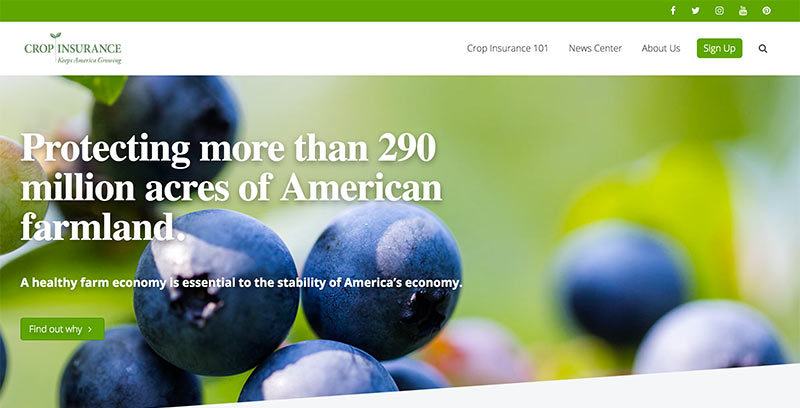Crop Insurance Helped Mississippi Farmers See Yet Another Spring
The state of Mississippi and farming are so intertwined that it is hard to imagine one without the other. Agriculture is not only our state’s number one industry; it employs roughly one-third of our population, contributing $5.8 billion to the state’s economy. There are approximately 42,000 farms in the state covering 11 million acres, producing rice, cotton, soybeans and other commodities, and there is not a county in our state where farming doesn’t play a major role.
Agriculture in this state, and throughout the U.S., has been one of the bright spots that is helping the U.S. turn the economic corner. But the productivity of the American farm and the consumer benefits of the American food supply did not just happen in a vacuum. It all happened because of hard-working farmers, abundant natural resources and public policies that provided risk management tools for farmers when disasters struck. And hands down, farmers across the country will tell you that their most important risk management tool is crop insurance.
As a crop insurance agent who was on more than a few farms the day after Hurricane Katrina struck, I can tell you first hand that crop insurance was a financial lifeline for many farmers. Katrina hit so many farmers who had never before gone through a large-scale natural disaster that wiped out their entire crop at harvest time. For farmers whose crops survived the storm, their fields were so waterlogged that they couldn’t get their crops out. It was precisely in this kind of situation that crop insurance showed its value to Mississippi producers, and for those who had purchased crop insurance it was a godsend.
Crop insurance is privately written and delivered insurance that is purchased by individual farmers and tailored specifically for to the risks they face on their farms. Because crop insurance is delivered by the private sector, indemnities are made to farmers who suffer losses quickly and efficiently.
After Katrina, crop insurance companies dispatched crews from other parts of the U.S. to the Gulf coast states to meet with the farmers and perform the appraisals. And, believe it or not, despite the size of the disaster and the number of claims made, indemnities were paid in a matter of weeks.
For farmers, the speed with which they received their indemnities enabled them to pay off their production loans from the crop they had just lost and bounce-back to plant again the following spring. Compare that to federally-administered disaster programs, such as SURE, that take as long as two years for a loss payment to finally reach a farmer in need. Two years is often too late when you have just lost everything.


